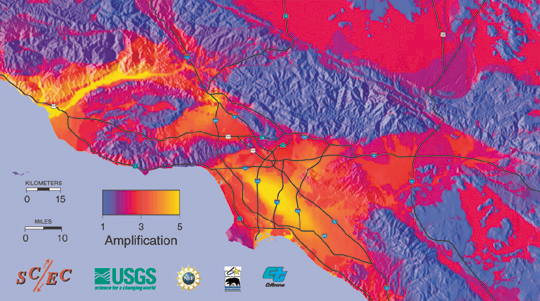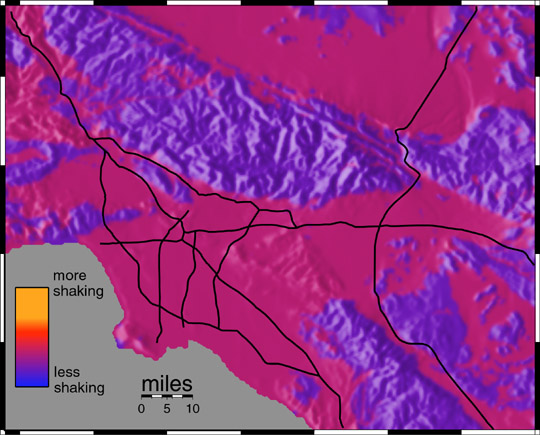|
|
About SCEC | Research | Resources | Learn & Prepare | |||||
|
Relative Shaking Amplification in Future Earthquakes
Two important local geologic factors that affect the level of shaking experienced in earthquakes are (1) the softness of the surface rocks and (2) the thickness of surface sediments. This image of the Los Angeles region combines this information to predict the total amplification expected in future earthquakes from local geologic conditions or "site effects." The orange areas are the "hotspots" where this amplification (not shaking) is anticipated to be highest. Shaking will ususally be most intense near the rupturing fault in an earthqauke. Areas of intense shaking due to proximity to probable earthquakes were mapped in the SCEC Phase II Report. Data for image courtesy of Harold Magistrale, San Diego State University; Chris Wills, California Division of Mines and Geology; and Ned Field, U.S. Geological Survey. Map created by Ned Field.
Note: If the above map had been made without the results of this study, if might look something like this:
This simplistic versions does not include the basin depth amplification factor and surface geology is distinguished only by soil or rock. Essentially, red areas are soils and blue are rock. Map created by Ned Field. Cooperating Organizations
|
|||||||||
|
Created in the SCEC |
|
© 2025 Privacy Policy and Accessibility Policy |





